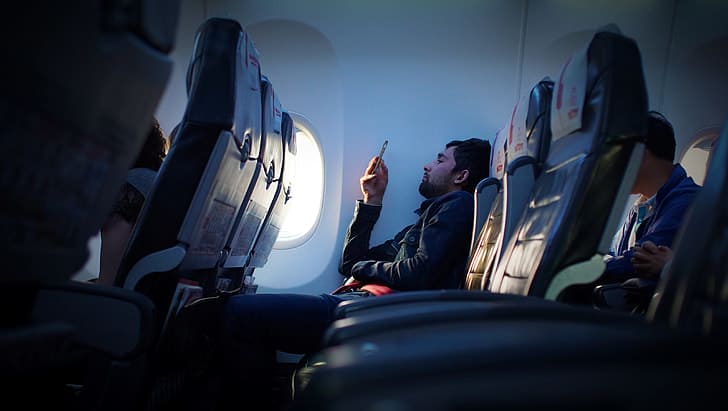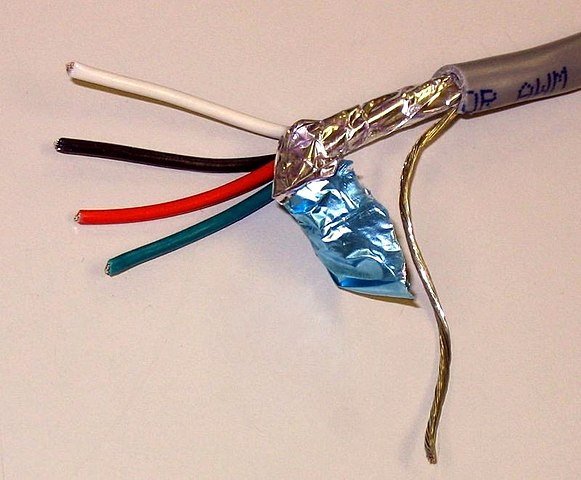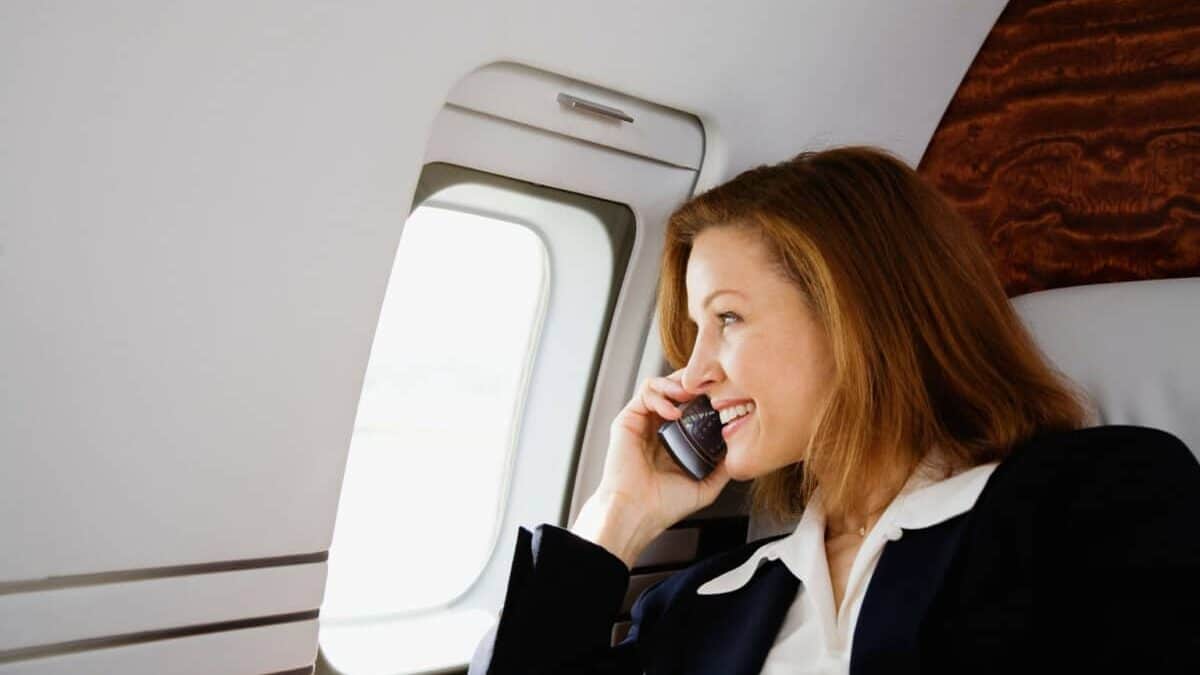
We have all been on a commercial flight and immediately after the cabin door is shut, the flight attendants ask you to turn on ‘Airplane Mode’ on your tablet or smartphone. You might have wondered what is the exact reasoning for this or even if your tiny smartphone could bring down a giant airliner if perhaps you neglected the given instructions.
The Federal Communications Commission(FCC) bars the use of cell phones on airplanes because of the potential Electromagnetic Interference(EMI) on an airplane’s navigation, communication & data reporting systems. In addition, cell towers are not designed to handle fast-moving cellular devices in aircraft.
We all know that not everyone places their phone into ‘Airplane Mode’ so what exactly happens if the airplane takes off with cellphones still in use and why is the use of them prohibited? I was interested in finding out exactly what the reasoning is behind this ruling because as a pilot myself, I have never had any issues with interference flying in helicopters.
To find out what I learned please read on…
According to FCC, their main reasoning behind the ban is the POTENTIAL Electromagnetic Interference to an airplane’s avionics that COULD cause a flight safety issue. Although there has been no direct evidence that has proven this danger, to the FCC, safety is the priority and therefore it upholds the prohibition as a precaution.
The FAA just follows the FCC’s ruling and is in charge of its implementation and governing.
Additional Reasons For the Ban on Cell Phone Use on Aircraft are:
Preventing Passenger Confrontations
To create a serene and comfortable atmosphere for passengers during flight. Sitting next to a loud passenger on a phone call throughout the flight duration could be a catalyst for tension and confrontation from other passengers. Keeping passengers calm is essential for cabin safety.
Passenger Attention
To ensure passengers listen to the safety instructions given to them by flight attendants. Flight attendants need to control the passengers throughout the entire flight to ensure safety briefs are understood and directions are followed in an emergency.
Noise Reduction
For many, getting a quick nap on the plane is the best way to beat the boredom. The constant barrage of cell phone ringtones, email & text notifications could become intolerable. Imagine an aircraft the size of a Boeing 777 with almost 400 people onboard all receiving texts and phone calls!

Join My Newsletter & Get Great Tips, Information and Experiences To Help You Become a Superb Pilot!
How Could Cell Phones Cause Interference with Airplanes?
Airplanes like the Boeing 737 have close to 42miles/67km of electrical wiring within their fuselage and the Boeing 747 series has over 155miles/250km of wiring!
Cell phones transmit signals as radio waves. An airplane’s wiring acts like antennas that can intercept the transmitted radio signals causing the data traveling in the wiring to be corrupted leading to erroneous data being shown to pilots, radio interference, or even incorrect flight control inputs.
Any unwanted radio signals being absorbed by a system, network, or device is known as Electromagnetic Interference(EMI). It is these unwanted radio signals that are known as ‘Noise’ to an electrical engineer and it’s this noise that can corrupt signals within a system leading to false readings of data, or complete destruction of signals.
We have all seen how many times we get a communication error message when trying to access the internet without a good connection – The devices on the aircraft are no different!

In modern airplanes, one of the ways used to combat communication wiring intercepting external influences is by using ‘Shielded Data Cable’.
Shielded cable is a series of conductors that are wrapped in a foil. The foil acts like a Faraday Cage (Wiki Link) and ‘absorbs’ any inbound or outbound radio signals and directs them away from the internal conductors of the cable and the equipment they connect to.
In older airplanes where shielding was not as implemented or if shielding has degraded, wires on these aircraft may be prone to picking up signals from the phone resulting in false data.
Many companies, research agencies, and universities have carried out extensive, in-depth research to mitigate any potential problems over the last few decades as cell phone technology has rapidly progressed.
Aircraft navigation, radio, control systems, and their electronic devices have been ‘hardened’ through shielding, design, placement, and cable routing to replace the analog devices which were prone to interference, especially from early cell phone designs using older radio signal technology
In addition, the FCC has divided the commercial radio spectrum into frequency categories for different uses, therefore, signals from a cell phone can no longer interfere with the bands reserved for aircraft use.
You Can Find the FCC Frequency Allocation Spectrum Chart Here at Wikipedia
Reports from various studies have recommended the use of cell phones on airplanes to be allowed since there has been no sufficient evidence of adverse interferences but still insist on switching off these devices during the critical take-off and landing phases.
The FCC has at some point considered lifting the ban on making cellular voice calls and texting but ended up upholding it on the citation of ground network interference. Though the FCC and FAA are not ready to allow the use of cell phones during flight, Europe has already adopted new rules with the European Aviation Safety Agency (EASA – Europe’s equivalent of the FAA) has given the green light to new technologies.
Several airlines in Europe allow passengers to use cell phones in the skies as well as wireless internet due to the scientifically proven data that new technology has removed the threat once posed by EMI.
Learn More…
Try These Articles:
* How Do Airplanes Handle Lightning Strikes?
* Are Pilots Allowed to Leave the Cockpit During Flight?
What is Ground Network Interference?
The ground network of cell phone towers is designed to transmit signals low to the ground as that is where 99.99% of cell phone users are. Because of the curvature of the earth, these signals can be received up to several thousand feet.
When a cell phone is used on the ground it is within range of only a couple of cell phone towers. As the cell phone moves its signal is transferred from one tower to the next to ensure it has the strongest signal at all times.
When a call is made from an aircraft, signals from the cell phone bounce off many cell towers as the height allows it to be in line-of-sight of possibly dozens of towers. This creates a constant switching of the signal between towers to ensure the best possible signal reception. This frequent switching can create a significant network overload.
For the few people that still use their phone on an airplane until the signal is lost (like myself), there is not too much of an issue on the cell network. However, if the FCC lifted its mandate and now thousands of people on flights are pinging off many towers the system could very easily overload.
To overcome this, the network would have to be severely updated at a huge cost to the cell companies, hence the lobbying to the FCC to keep the cell phone ban on aircraft.
What Does Airplane Mode Do?
Airplane mode on your cell phone isolates the cell phone’s signal receiving and transmitting capabilities but allows Bluetooth and Wifi to remain active so airlines can use these technologies for serving passenger media and entertainment streaming services onboard their aircraft.
In simpler terms it makes your device stop functioning as a radio transmitter and receiver.
Are In-flight Cell Services Possible?
Picocells are miniature, low-power cell antennas installed on an airplane to allow the transmission of information via calls or messages over the aircraft’s network connection. Picocells route voice calls and messages through a satellite network which patches them into the ground-based network.
At a normal cruising altitude of 36,000 feet, cell phones do not receive signals from ground-based networks because there are no cell towers with the range or signal transmission height to reach those kinds of altitudes.
This is also called Voice Over Wi-Fi because planes are connected to Wi-Fi data lines through satellite links. This technology is commonly available in private and business jet aircraft but costs are a premium.
Why Can Private Jet Passengers Use Cell Phones But Not Airline Passengers?

Commercial airlines are regulated under different rules set forth by the FAA and FCC compared to private aircraft when it comes to cell phone use. The safety of many more people comes into play on a commercial jet compared to the numbers onboard a private aircraft.
One of the major reasons why cell phone use is not banned on private aircraft is that to get cell service on a private jet they have to be outfitted with the latest communication equipment to enable a Voice Over Wi-Fi call.
These systems have been certified to not interfere with aircraft electrical and instrumentation and will not violate any of the cellular rules.
Over time airlines have begun to use this technology to allow messaging while in cruise – at least this was the case on my last flight with Delta, however, I see the use of voice calling to remain banned to enable the crew to have full control of their passenger’s attention when needed.
Learn More…
Try These Articles:
* Can a Plane Land Itself?
* Why Are Airplane Lavatories So Loud?

